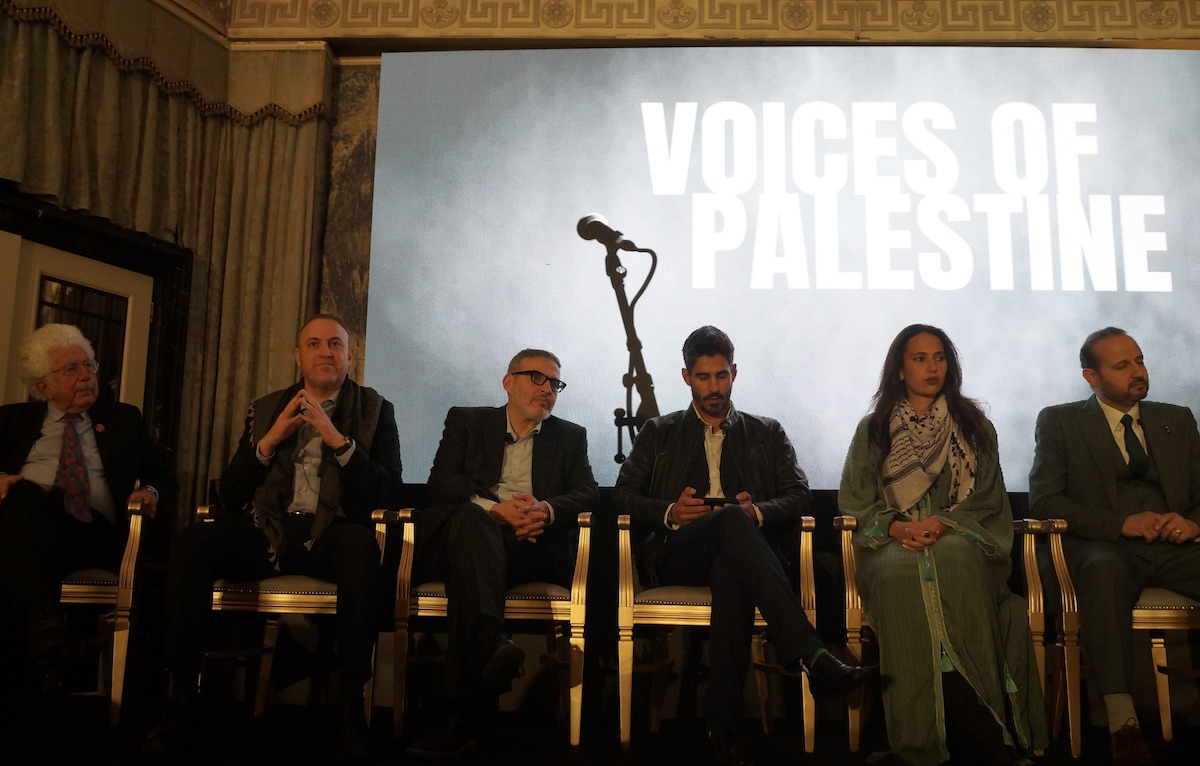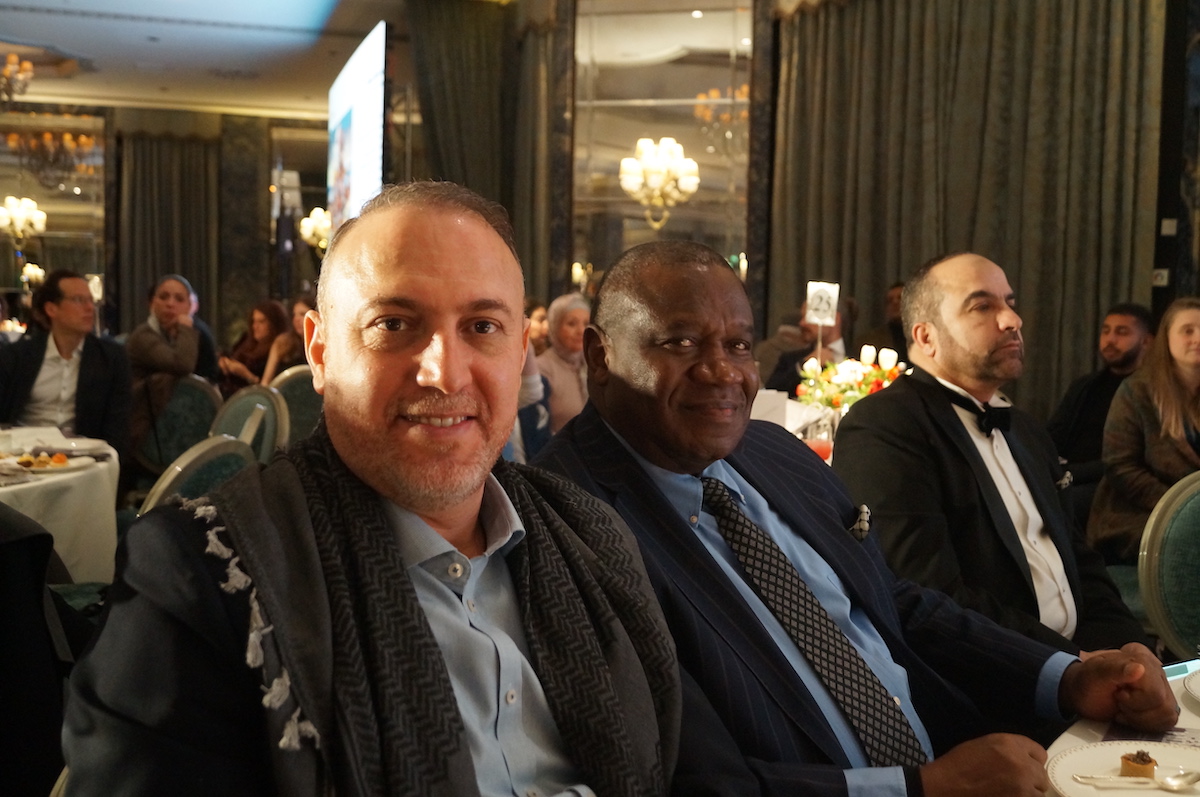LONDON: A prestigious art auction in London has raised £165,000 ($208,800) for nonprofit organizations providing medical aid in Gaza and advocating for Palestinian human rights, its organizers said on Sunday.
Voices of Palestine, which took place on Feb. 25 at the prestigious Dorchester Hotel, featured 15 pieces of Arab artwork, including a Banksy-designed miniature sculpture of his “Flower Thrower,” painted by local Palestinian artists. This piece, originally sold at the Walled Off Hotel in Bethlehem, fetched the highest bid of £16,000.
The proceeds from the auction are earmarked for two primary causes: supporting Fajr Scientific’s comprehensive healthcare initiative in Gaza, and the efforts of the International Centre of Justice for Palestinians.

The event hosted a panel discussion featuring a high-profile list of speakers. (AN Photo/Tamara Turki)
Egyptian activist and Editor-in-Chief of Scoop Empire Rahma Zein told Arab News: “These kinds of events are important to reiterate the message that we need to empower ourselves to have the right kinds of discussions as to how to do that, be it economically or politically.”
The 30-year-old went viral in a video confronting CNN’s Clarissa Ward for her reporting at the Rafah border. She was then invited to appear on Piers Morgan’s TalkTV show to discuss Palestinians’ suffering.
She added: “Right now there is a void; there is an empty space because the veil has fallen.
“We’ve seen that these institutions that we deemed as prestigious, these news outlets that we deemed as prestigious, are no longer the case; they’re duds.
“Now is the time to look inwards, and look regionally and see so that we’re not looking at token politicians that look like us but speak in the name of Zionism or appease the colonizers.
“We need to empower ourselves. We need to own back our narrative and these are the events to do so.”
Fajr Scientific CEO Dr. Mosab Nasser has detailed a $55 million post-war plan aiming to enhance Gaza's medical infrastructure by adding 120 hospital beds, numerous operating rooms, and intensive care units over the next three years.
Meanwhile, the ICJP focuses on strategic legal actions and advocacy to align foreign policy with the realities Palestinians face, guided by international law.

Palestinian Ambassador to the UK Husam Zomlot and South African High Commissioner to the UK Jeremiah Nyamane Mamabolo. (AN Photo/Tamara Turki)
The event hosted a panel discussion featuring a high-profile list of speakers including Rahma Zein and Nasser alongside Palestinian Ambassador to the UK Husam Zomlot, award-winning journalist Ahmed Eldin, surgeon Dr. Ghassan Abu-Sitta, and Israeli-British historian Avi Shlaim.
The panelists tackled a wide range of issues on Israel’s war in Gaza, which has killed over 30,000 people. Eldin spoke on the democratization of the media and its role in challenging Western narratives about Palestine, while Abu-Sitta shared harrowing experiences of treating patients under siege in Gaza, including Israel’s bombing of hospitals.
The event drew 450 attendees, with tickets sold at between £150 to £250.













